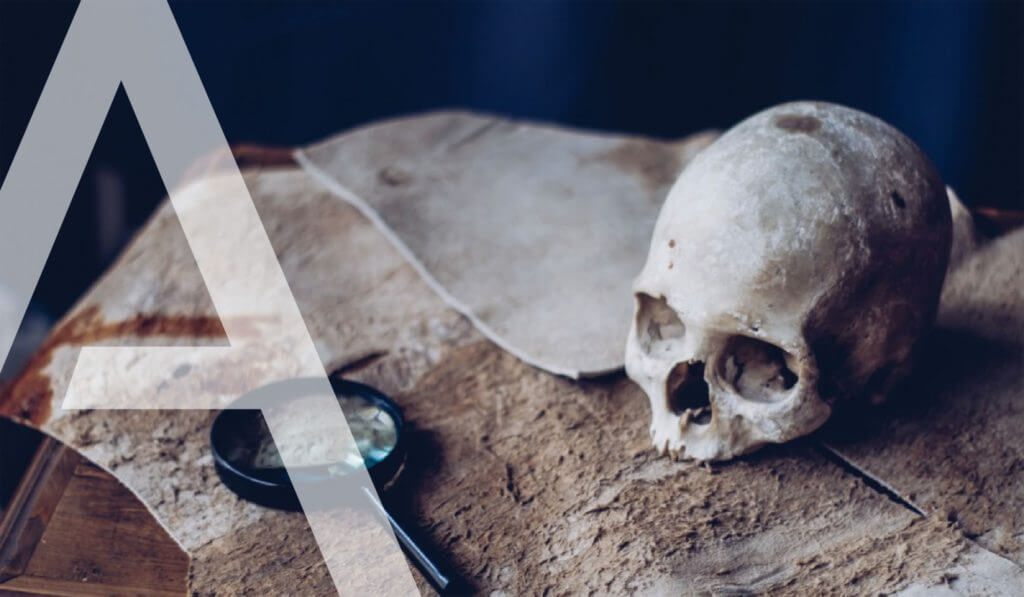THE MOVEMENTS OF ANCIENT POPULATIONS THROUGH THE STUDY OF STRONTIUM
Analytical method, sampling conditions, and benefits of strontium analysis, CIRAM Laboratories follows all protocols for an accurate and thorough study.

Isotopes are present everywhere in the environment and are found in plants through sediments and water, and then in animal tissues (and therefore in human tissues) through eating, drinking, and breathing. Analysis of stable isotopes, such as those of carbon, nitrogen, strontium… allows us to study the diets of an individual or group of individuals and to determine where an individual grew up or lived the last twenty to twenty-five years of his or her life.
Strontium is abundant in nature and is found mostly in rocks and sediments. As sediments are eroded and dispersed in water and food resources, it is taken up by the organism and incorporated into bone tissue. The isotopic ratio of strontium varies from one geographical region to another. Therefore, analysis of strontium isotope ratios in bones or teeth can determine the geographic origin of an individual or measure the homogeneity of a group of individuals.
Bone and teeth are the most frequently analyzed tissues because they are hard and preserve for a long time in archaeological contexts. Bone is made up of two components: an organic matrix composed mostly of collagen, and an inorganic mineral matrix composed mostly of calcium phosphates. Bone is a living tissue that is constantly renewed as we grow and age. However, this process is very slow, and dense cortical bone reflects approximately the last ten to fifteen years of an individual’s life. Teeth are also composed of organic and mineral materials, but tooth enamel does not renew itself. Therefore, teeth are very useful when determining the environment of an individual’s early life. In addition, by comparing the teeth and bones of the same individual, it is possible to determine whether he or she has migrated from one area to another since childhood. The teeth show the place of living during childhood, and the bones show the place of living during the years before death.
The principle is to compare the 87Sr/86Sr ratio of the bones and/or dental enamel to that of the environment (sediments) around the archaeological site and in the surrounding areas (with different geological substrates). This will allow discussion of the geographic origin of the food ingested by the individuals.
The selection of material will, as far as possible, respect the preservation of archaeological remains while satisfying the needs of the study. Sampling of bone fragments should preferably be done at the cortical bone level. The study will have to involve series of several subjects to be relevant, we will try to always select the same anatomical part. For dental tissue studies, depending on the inter or intra-individual study problems, we will carry out either an analysis per tooth or a multi-analysis per stratum. The analysis will be performed using a mass spectrometer coupled or not with laser ablation.
Animal tooth samples are cleaned with ethanol and placed on a glass slide to ablate the outer enamel surface. For the specific case of herbivore teeth, we will select analysis areas at the base, middle, and top of each tooth to assess the enamel that has formed at different times in the individual’s life. The spectrometer is coupled to a laser system, equipped with an ablation cell (LA-ICP-MS). For the laser ablation analysis, line scans of 500 µm length are applied with a circular spot size of 100 µm, a translation speed of 5 µm/s. We use several internal reference materials of bioapatite, as well as apatite and carbonate.
Strontium analysis is valuable for studying population movement. With our experienced scientists and state-of-the-art equipment, strontium studies are a specialty of CIRAM Laboratories.
